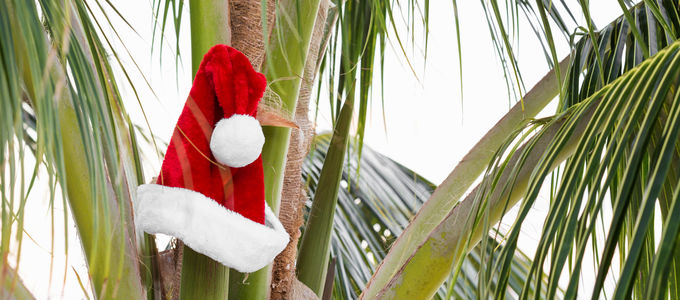Christmas in Australia means a holiday spent at the beach
Christmas in Australia! How does that go? It is summer in the southern hemisphere. Daytime temperatures range between 25 to 32° Celsius, people are soaking up the sun. Do people get in the Christmas spirit? nac.today asked an “expert” in these matters, and his answer was a definite yes.

District Apostle Andrew Andersen is an interesting guy: he gets around, is cosmopolitan, friendly, and easy-going—and a typical Australian at heart. He lives in a small town north of Brisbane, in Queensland. When we asked him whether and how the Australians celebrate Christmas, he answered with a smile: “Your question ‘Christmas in Australia, is that possible?’ reminds me of the foreign tourist who asked a local person whether we had 25 December in our country. ‘Yes,’ was the reply, ‘we also have 24 December and 26 December—every year in fact!’”
Of course the people in Australia celebrate Christmas—with some small differences to the way it is celebrated in the northern hemisphere. “Let me explain,” District Apostle Andersen says. “For us it is summer. That generally means daytime temperatures of between 25 and 35° Celsius, depending on which part of the 7.7 million square kilometre island continent you are spending Christmas in.” As most people live in coastal areas the beaches are very popular even on Christmas Day.
Gifts under the tree
“A typical Christmas Day for most Australians starts with the gifts to the children from under the Christmas tree very early in the morning,” the District Apostle says. “Churchgoing families then head off to church; others prepare for Christmas Day lunch which is typically the biggest (and longest) feast of the year. Barbecues at home (especially if there is a swimming pool), at the beach, or in parks are very popular.” Family members usually travel at Christmas in order to be together with their extended families for this day. Almost all households have a Christmas tree and Christmas decorations around the house. “Interestingly,” District Apostle Andersen says, “these decorations often feature snow and European winter scenes even though most people in Australia have never seen snow! Some houses are decorated with colourful lights outside that make for outstanding displays every night throughout the month of December. This is becoming more popular every year.” Christmas is very much a focus period for all Australians, where there is a common expectation of shared joy. “There is a definite feeling of goodwill between people everywhere and everyone extends their good wishes to each other at this time of the year, even to total strangers. It is also the summer holiday period for the school children so families often take their holidays then which adds to the relaxed feeling and establishes a certain calm over this period.”
And in Asia?
“Also the countries in Asia know Christmas,” District Apostle Urs Hebeisen reports, who looks after the New Apostolic Christians in many parts of South-East Asia. “Unfortunately, it is very commercialized.” The festive season is big business in most countries and only very few actually have a public holiday. “Hotels and shopping malls create huge winter landscapes. In Hong Kong and in China you often see banners that read WINTERFEST instead of Christmas.”
In the Philippines, however, the only Christian country in Asia, it is very different, he says. Here Christmas still lives in people’s hearts and it has been said that the Filipinos celebrate the longest Christmas season in the world. “On Christmas Eve the people, who are mostly Catholic, go to the Misa del Gallo at 11 p.m. and which ends at midnight. This is followed by Noche Buena, Christmas Eve.” The social inequality is huge, the District Apostle confirms, but even so Christmas is feast of togetherness, of food and drink for most people.
In the days leading up to Christmas, many people follow the beautiful and beloved Christmas tradition of caroling. “Already during the Advent season children go from house to house, singing Christmas carols and receive a little something for it.”
Article info
Author:
Date:
Keywords:
Peter Johanning
22.12.2015
Asian,
Australia and Oceania,
Christian holidays




